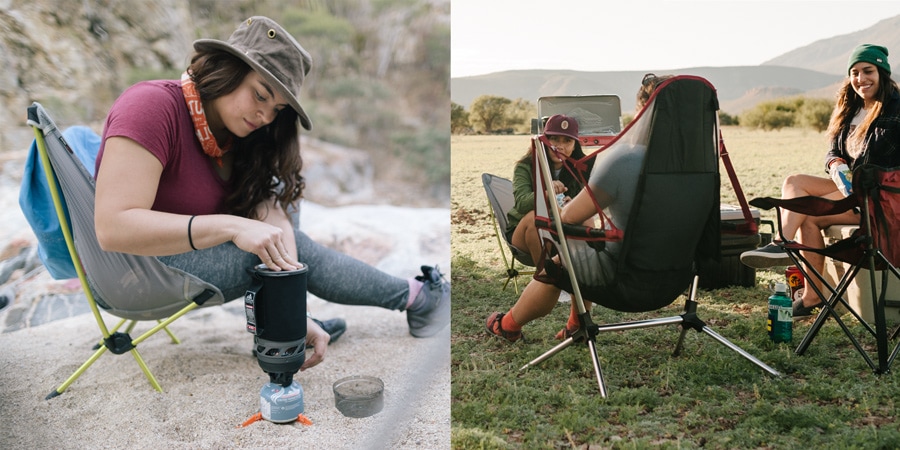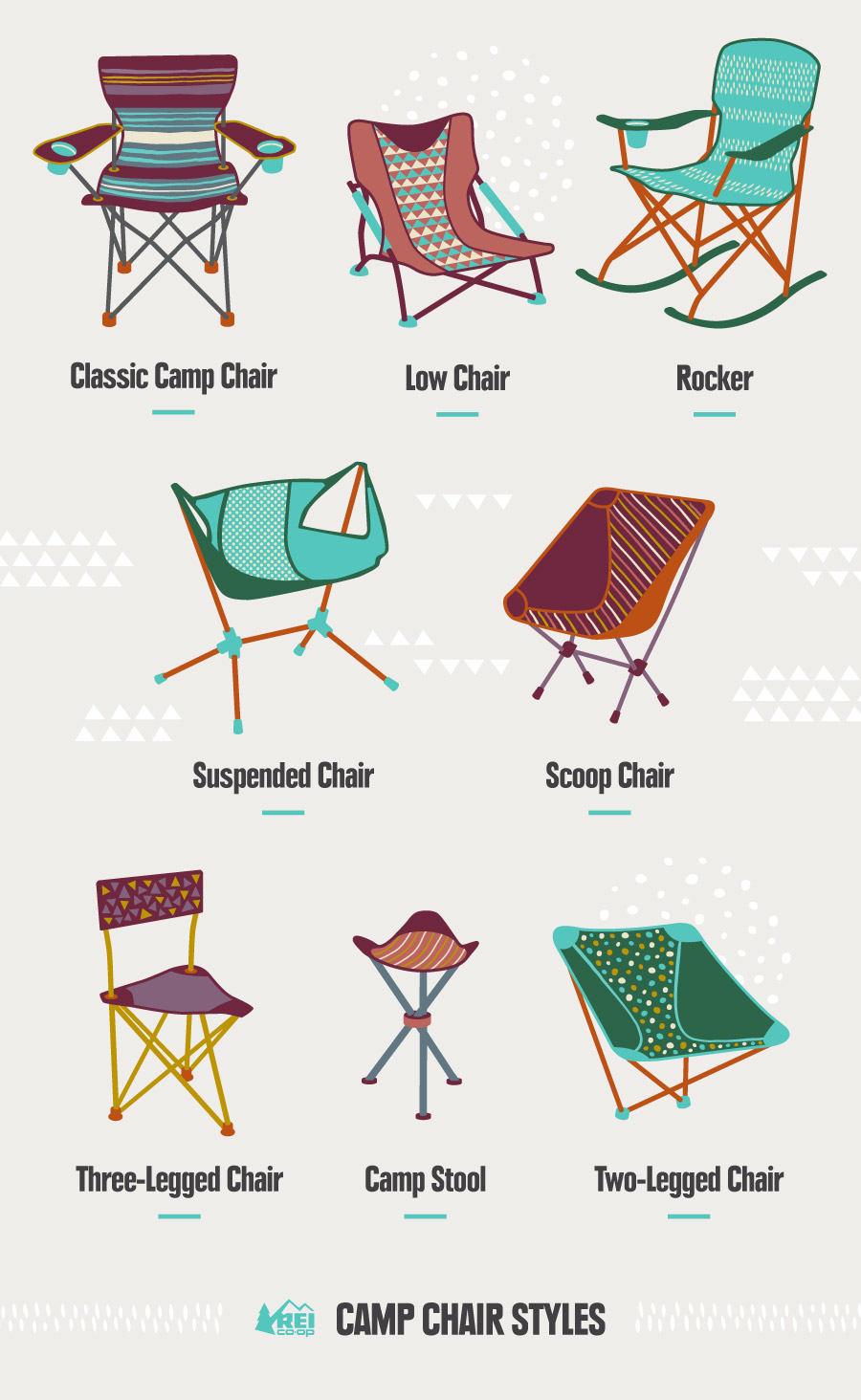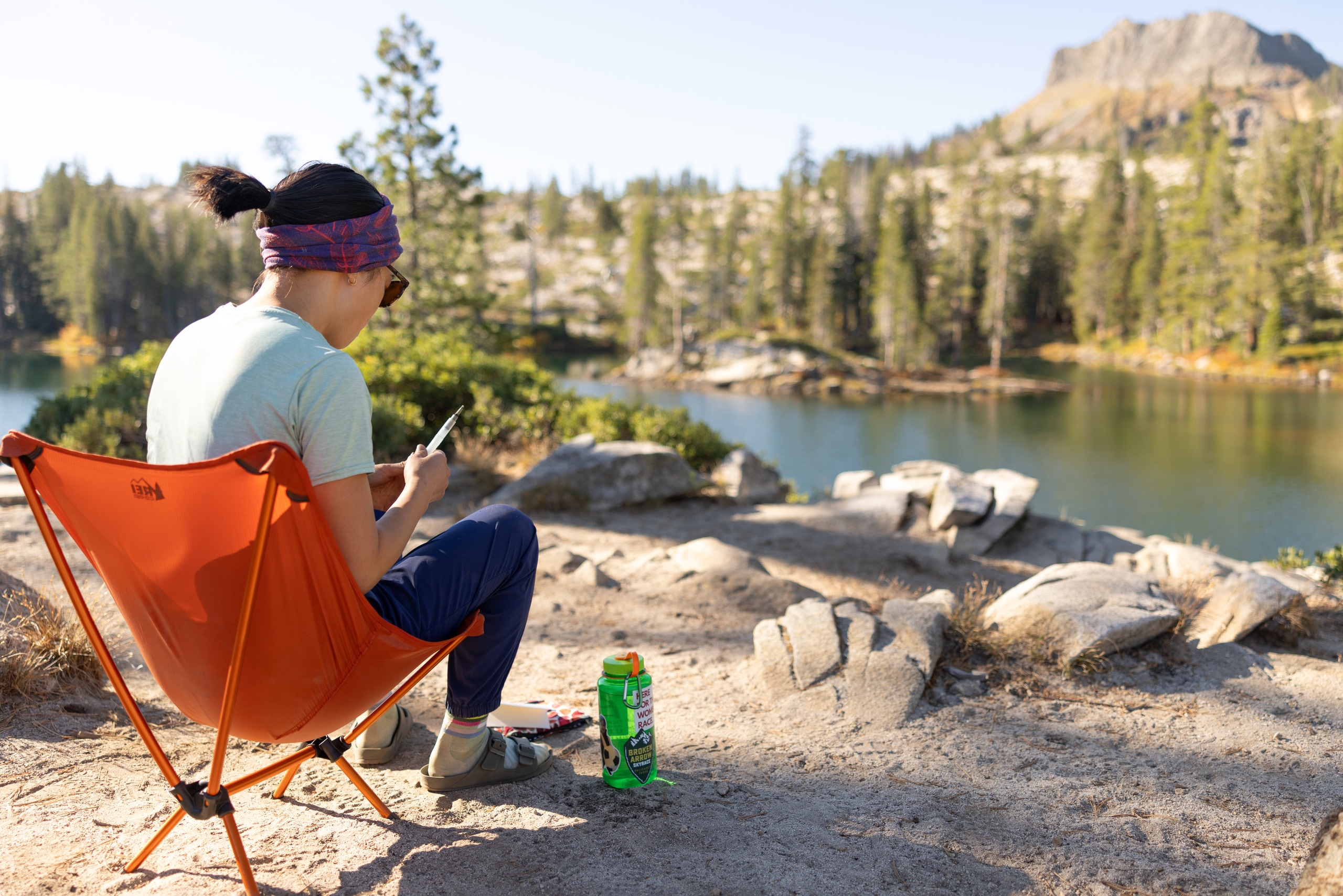After a daylong adventure away from camp or along the trail, you've earned a comfy place to perch. Chair designers have gone a little wild in recent years, so you have a lot of options for your downtime gear.
When choosing a camp chair, consider the following factors:
- End use: For backpacking, weight and packed size are the key stats. For front country camping, comfort is what matters most.
- Size/height: If you need a roomy chair, bigger is better. Low chairs are nice for concerts and uneven or sandy terrain. High chairs are easier to get in and out of.
- Design preference: Options include classic, two-legged, three-legged, rocker, glider and more. If an innovative chair is intriguing, give it a sit test before you buy it.
Backpacking vs Camping

Backpacking Chairs
Truthfully, a backcountry camping chair is a luxury. So weight and packed size are paramount. If you choose to indulge, decide how much weight you're willing to add to your pack and whether you have room in your pack or a place to lash it outside your pack. We list both weight and packed size specs on REI.com.
Car Camping Chairs
There's no rule that says a chair you buy mainly for backpacking can't double as your camping chair. But your car is doing all of the heavy lifting, so you can pick a premium chair that's as big and plush as you'd like.
Camp Chair Styles

Classic camp chairs: These have four legs (or a similarly wide, stable base), along with a straight back and flat seat. They're affordable, stable and typically high enough for you to sit down and stand up with ease.
Low chairs: Good on sand or uneven ground because they are less tippy than a higher chair; also a great option for outdoor concerts that put a height limit on chair backs.
Rockers and gliders: Kicking back and rocking are a natural pairing, especially for fidgety folks. These styles work best on even ground.
Suspended chairs: You pay a little more for this newer design where the chair hangs down from the frame and lets you swing a little; no worries about uneven ground because you're suspended.
Scoop chairs: A catchall term for chairs that don't have a distinct back and seat. Many offer a good compromise, giving you ample comfort in a lightweight camp chair.
Three-legged chairs: The simplest are camp stools; others that have both a seat and a back will weigh less than their four-legged counterparts, but they won't be quite as stable.
Two-legged chairs: Chairs with this design are an acquired taste, though they definitely have their fans. Your feet act as the front feet of the chair, which saves weight and lets you rock a little. However, you can pitch over backward if you kick back too far.
Other Camp Chair Considerations
- Materials: Often price reflects the quality of the materials in both the frame and the fabrics; backpacking chairs might include ultralight components.
- Capacity: Not all chairs support the same weight, so check this spec if you're a big camper.
- Extras: Cup holders, footrests, head and lumbar pads, breathable mesh panels and more can all enhance comfort.
- Complexity: With some chairs, you simply pop 'em open and plunk yourself down; others, often ones with multiple hubs, might take a little time to set up.

